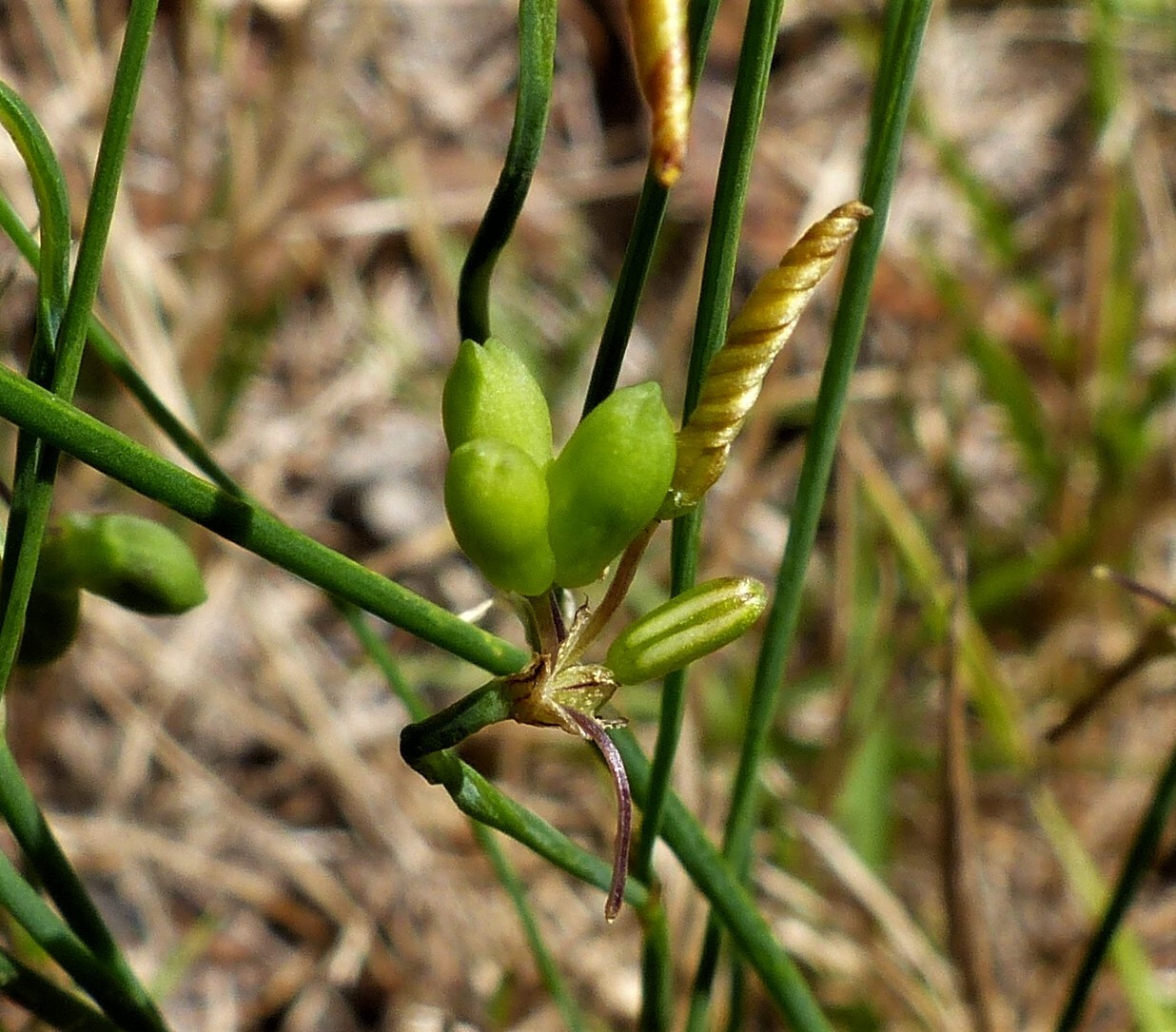
Greek treis – three, koryne – a club, referring to the fruits.
Perennial clump-forming shrub-like herb. Stems erect, branching, perennial. Leaves few, basal or on stems, often reduced to scales, linear to lanceolate, sheathing, not flattened basally. Flowers lasting one day, erect to spreading, radially symmetrical, twisting spirally after flowering, stalked, individual flower stalks articulated. Inflorescence a reduced axillary or terminal cyme. Tepals 3+3, free. Stamens 6, free, filaments thickened and hairy. Ovary superior. Fruit a series of nutlets. Seeds ovoid, black.
Branched, largely leafless stems, basal sheathing leaves with unflattened bases, hairy filaments and nutlets.
At least 7 species widespread across Australia, one extending to New Guinea.
Thongpukdee & Clifford (1988).
Source: (2005). Hemerocallidaceae. In: . Horticultural Flora of South-eastern Australia. Volume 5. Flowering plants. Monocotyledons. The identification of garden and cultivated plants. University of New South Wales Press.
